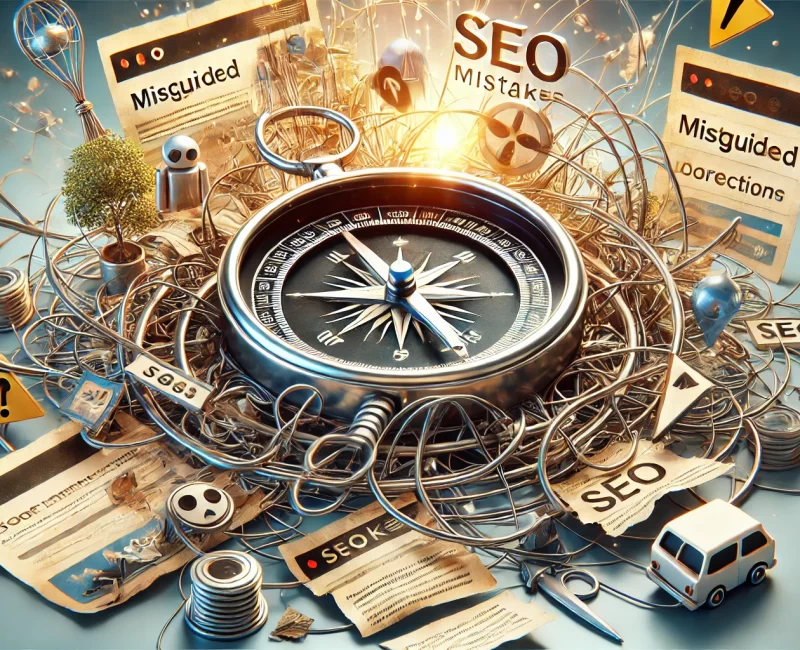
“I have lots of traffic, but very few people are signing up, clicking or making any purchases.”
This is a complaint you will hear from most website owners at one point or another.
Traffic is vanity; sales are profit.
So, what can you do to convert that potential into profit?
The great news is that there are many things you can do to ramp up your site’s conversions. And, unlike most other optimisation aspects, you can start seeing results immediately after deploying these conversion optimisation techniques!
- Embrace A/B Testing
- Improve Your Site Speed
- Make Your Call To Actions Really Prominent
- Display Positive Feedback Strategically
- Don’t Overwhelm Users With Options
- Cut Down On Requirements From Your Users
- Go Over Your PPC Strategy
- Make Your Site More Mobile-Friendly
- Make Your Page Copy Concise
- Write For Humans
- Highlight Important Points With Visuals
- Use Video
- Consider Using Different Background Colours
- Show Off Your Social Media Following
- Cut Out The Captchas
- Cut Out All Distractions
Embrace A/B Testing
So, you designed your site a decade ago and haven’t changed anything since then. It may be time to change things up.
Maybe you have not seen the conversions from your PPC campaigns or significant organic traffic. Reduce the number of words in your headlines, change the language used, change the colours of your sign-up form, etc.
The idea is to give your users a new experience that encourages them to take a conversion action. When you tweak, you can try different variants of microcopy, graphics, and so forth. Here is more on A/B testing.
Make sure you are realistic with your expectations. One hundred visitors is rarely a good sample for judging conversions. 1000 may not even be enough.
Improve Your Site Speed
Web users are more impatient than ever before. The average web user expects your site to load fully in less than 3 seconds. Users will exit your page (bounce) very quickly if your page load speed is poor. Of course, this may explain why your traffic numbers don’t reflect in your conversions.
Brendan from Umbrellar.NZ gave us a bit more insight. He suggested that you “take a really good look at your Google Analytics data. An important metric is how long people are spending on your page. If they bounce instantly, then it may be because your users are getting impatient. If they stay longer and bounce, then it is more likely that your visitors just aren’t ‘feeling’ your webpage. Gzip, minify, and image optimisation can make a difference. It may also be worth looking at upgrading your web hosting.”
Make Your Call To Actions Really Prominent
It is easy to set up your page, expecting your website visitors to know what to do when they arrive. This is the wrong approach. It would help if you appropriately used Calls to Action (CTAs) to tell them what to do. Do you want them to call you? Do you want them to drop you their contact details? Be very clear about it.
When designing your CTAs, you need to consider how to address the viewer’s mindset as you lead them to a sale. Understand your visitors’ profiles so that your copy appeals to them at the point of their needs.
Buy Now – Get More Information – Get a Free Quote; all CTAs that appeal to different visitors.
Display Positive Feedback Strategically
Scepticism can overcome your clients just before they make a purchase or submit their information. One way to counter this is to have past customer reviews or current users appear prominently at the point of sale. For many, it is the final nudge over the line they need.
Don’t Overwhelm Users With Options
E-commerce businesses are often guilty of bombarding users with “other things you may like,” “popular items,” etc.- before they check out. In many cases, this leads to a distracted and confused customer who loses the buying momentum they had. Avoid displaying similar products to items already in a cart. Cross-selling should involve directly complementary products and should ideally be brought in after they have committed to the conversation!
Cut Down On Requirements From Your Users
We’ve touched on how users can quit a site because they cannot wait for a page to load. Impatience bites again when your users have to enter something that feels unnecessary. If there are too many fields to fill out, very few will start the process, and of the few that start the process, many will not complete it.
Instead of asking for everything from email to their pet’s name, limit the fields to a maximum of 5 or 6 and make those that aren’t essential optional! Don’t let pop-ups, surveys, lengthy account registration, etc., hinder you from making a sale or getting a lead.
Go Over Your PPC Strategy
If many people leave just after clicking through to your site, it could be that your site doesn’t offer what they want. This signifies a poor PPC strategy and means you are burning money. Ensure you are focused on PPC unless you use it for brand-building purposes. If you are looking for a great ROI, then your keyword strategy needs to be targeted at the people who are looking for your product or service. The ad copy then needs to qualify the people who click.
For example, if the site sells luxury furniture, you may want to put “Luxury… from $/£1000” in the advert. This may dissuade people who are looking for cheaper furniture from clicking through, improving their ROI and giving you a better idea of how many genuine potential buyers are converting. If someone is looking for a $200 couch, they will most likely bounce as soon as they hit your site.
Make Your Site More Mobile-Friendly
If you have been on Mars since 2007 and haven’t noticed, smartphones are everywhere. This means most of your target audience will visit on their mobiles. Google says 50% of searches are done from mobile devices. This means your conversion rates will suffer if your site doesn’t render in a user-friendly manner on mobile resolutions. Not being mobile-friendly may also affect your rankings.
Make Your Page Copy Concise
You may have noticed a theme already: web users are impatient. If your page copy is direct and to the point, clear and easy to scan, your conversion rates will improve. Web users these days run from poorly formatted, fluff-filled pages. Your copy should build trust and offer solutions to problems or the answers to their desires.
Write For Humans
If your content sounds like it has been produced for search engine robots, you will lose visitors when they arrive on your page. Avoid being too formal and talk to the reader with your page copy. Use keywords and theme words naturally in your content.
Highlight Important Points With Visuals
If your page has an important point, you need to be sure it blends with the rest of your copy. Changing your font size, using a different colour, and using arrows and images are all effective ways to guide your readers towards what you want your visitors to see. Think of your webpage as real estate and your website as a local neighbourhood. You need to add signposts to ensure people know where to go and see the information that you want them to see.
Use Video
More than ever, people are drawn to videos showing what your product is about. Fibre optic broadband and 4G connectivity mean there is no buffer time anymore.
Your video content could be a good customer testimonial or an explainer video. The key is to understand the importance of video in your marketing. A great video can enhance your brand image, and it may even go viral if it is creative enough.
Consider Using Different Background Colours
Different colours evoke different emotions and moods in people. Review your background colours. When doing this, be mindful of your niche. A bright pink background on a corporate website may not be a good idea. You also need to consider your brand colours and voice. If you are an established brand, you may be more limited in this area, or it may be time for a rebrand.
Show Off Your Social Media Following
When your visitors see thousands of people already following your business on social media, you have succeeded in building some degree of trust with them. Social proof shows that you are trustworthy to other people and builds credibility. Few psychological factors in conversion are as powerful as verifiable “group trust”.
Cut Out The Captchas
Captchas are an excellent way to avoid spam, but most web users today don’t like them at all. Many businesses have improved their conversions by simply stripping out the captchas, and doing so will most likely work for you, too.
Cut Out All Distractions
Your landing page should be built around getting your user to take a single action. If a page is for capturing leads, don’t sell anything on it. All page video, text and images should point to only one action. An excellent way to get the page focused is by starting with the call to action and then producing the design, elements, and copy that are created with this one call to action in mind. If any design or content element is not moving people towards the call to action, it is unsuitable for the page.
So, there you have it… 16 ideas to help you convert more of your website visitors into paying customers. We’d love to hear more important ideas! Get sharing!









